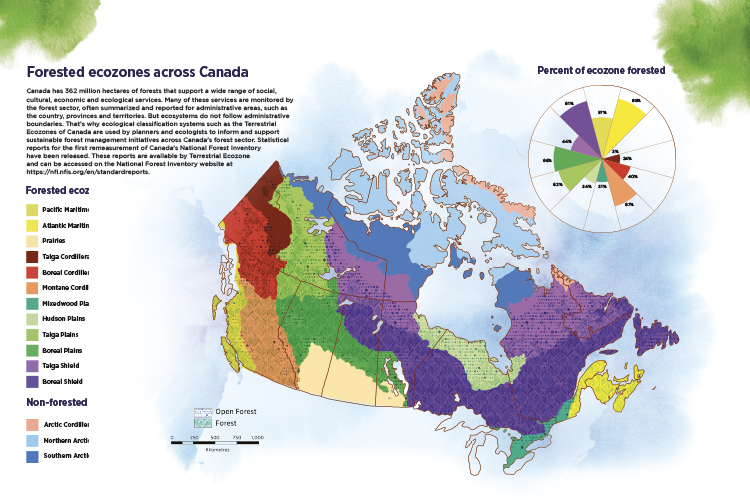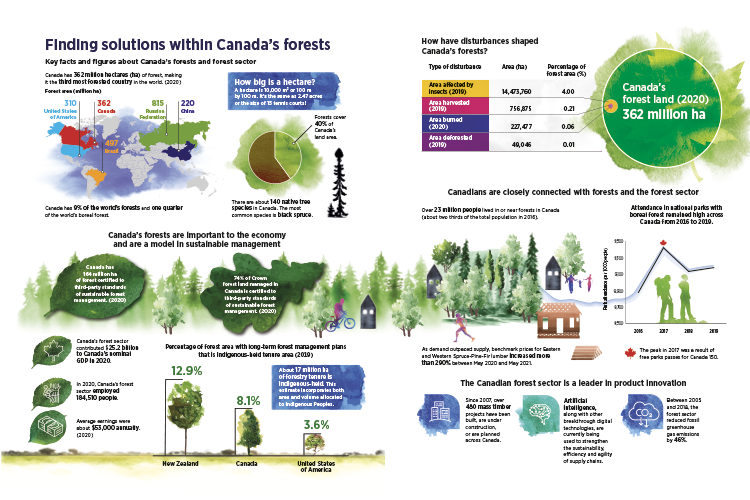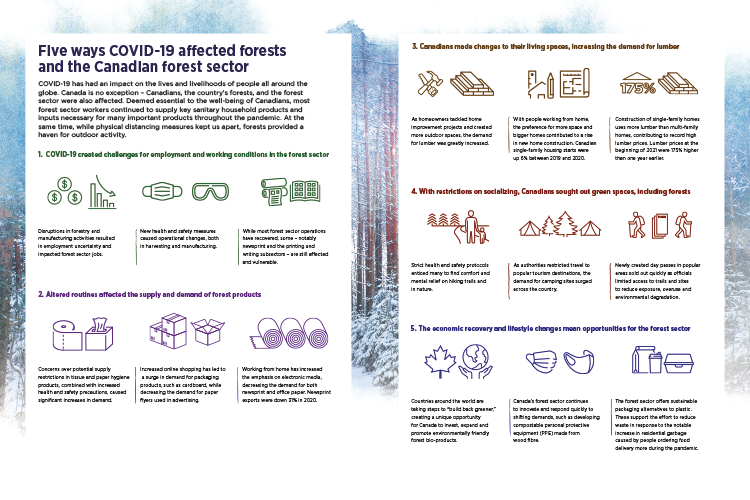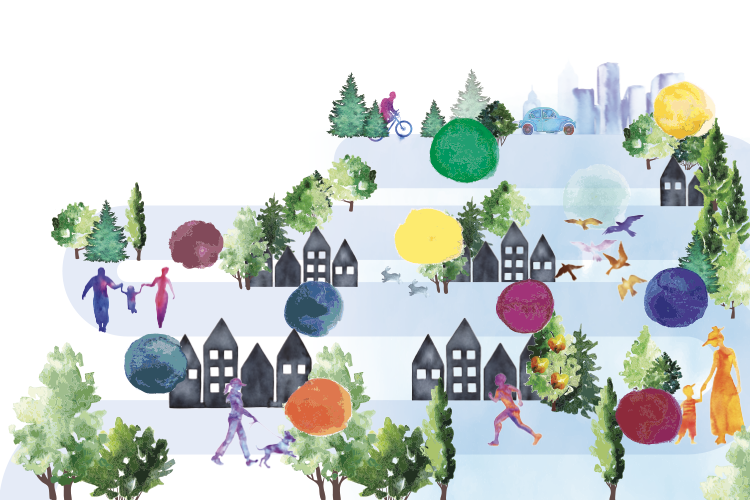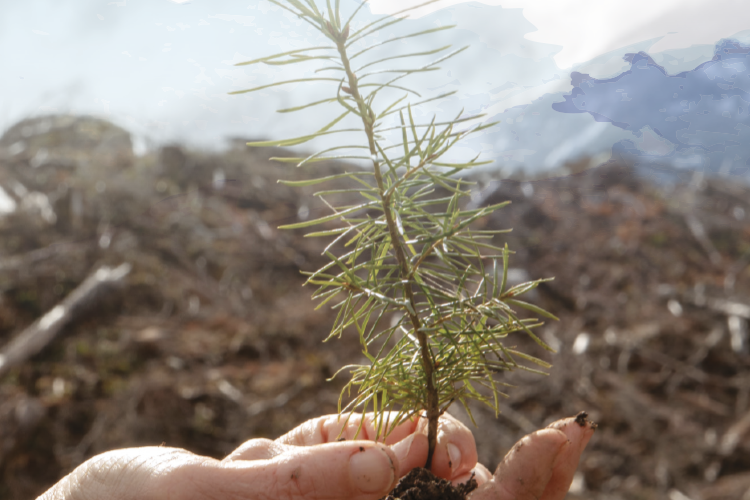Forest features
These stories provide a snapshot of some of the current challenges and opportunities facing Canada’s forests and forest sector and provide insight into where the future may lead.
Map: Forest ecozones across Canada (PDF, 723 KB)
Canada has 362 million hectares of forests that support a wide range of social, cultural, economic and ecological services. Ecological classification systems such as the Terrestrial Ecozones of Canada are used by planners and ecologists to inform and support sustainable forest management initiatives across Canada’s forest sector.
Finding solutions within Canada’s forests (PDF, 20.9 MB)
See key facts and figures about Canada’s forests and forest sector. These include facts on Canada’s forest resources, natural disturbances, the forest-based economy, sustainable forest management and innovation in the forest sector.
Five ways COVID-19 affected forests and the Canadian forest sector
See five key ways COVID-19 affected forests and the Canadian forest sector, including impacts on green spaces, forest-based resources, availability to consumers, and employment (among others).
Mass timber buildings are sustainable, safe and healthy
Learn about mass timber and why it is a sustainable, safe and healthy option for construction.
Urban forests: A nature-based solution for Canada
Learn about the benefits of urban forests and how they create resilient cities and towns by lessening the effects of climate change.
Planting 2 billion trees: A natural climate solution
See how Canada is planting 2 billion trees as part of efforts to limit climate change and achieve its goal of net-zero greenhouse gas emissions by 2050.
Page details
- Date modified:
